Peter ErtlProfessor of Lab-on-a-Chip Systems, Vienna University of Technology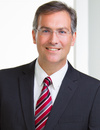 Prof. Ertl holds an engineering degree in Biotechnology (University of Life Sciences, BOKU, Austria), a PhD in Chemistry (University of Waterloo, UW, Canada) and received his postdoctoral training as a biophysicist at University of California at Berkeley (UCB, US). Following a position as Director of Product Development at a UW spin-off venture (Canada), Dr. Ertl joint the Biosensor Technology unit at the Austrian Institute of Technology (AIT). During his tenure at the AIT, Dr. Ertl was also granted a Fulbright Visiting Scholarship at UC Berkeley (2012) and conducted visiting scientist positions at Nanyang Technological University, Singapore (2013), the Medical Center of the University of California at San Francisco (2014). In 2016 he was appointed Professor of Lab-on-a-Chip Systems for Bioscience Technologies at the Vienna University of Technology (TUW), where his research focuses on the development of advanced in vitro diagnostic microsystems and organ-on-a-chip systems. Additionally, Dr Ertl held a visiting research appointment at Imperial College London (UK) in 2019 , is speaker of the Austrian Microfluidics Initiative (AMI) and editor of the open access journal Organs-on-a-Chip (Elsevier). |
Albert FolchProfessor of Bioengineering, University of Washington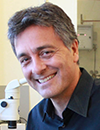 Albert Folch’s lab works at the interface between microfluidics and cancer. He received both his BSc (1989) and PhD (1994) in Physics from the University of Barcelona (UB), Spain, in 1989. During his Ph.D. he was a visiting scientist from 1990–91 at the Lawrence Berkeley Lab working on AFM/STM under Dr. Miquel Salmeron. From 1994–1996, he was a postdoc at MIT developing MEMS under Martin Schmidt (EECS) and Mark Wrighton (Chemistry). In 1997, he joined Mehmet Toner’s lab as a postdoc at Harvard-MGH to apply soft lithography to tissue engineering. He has been at Seattle’s UW BioE since June 2000, where he is now a full Professor, accumulating over 12,000 citations. In 22 years, he has supervised 19 postdocs (16% of whom have reached faculty rank), 36 graduate students (12 Ph.D. students, 25% of whom faculty rank, and 24 M.S. students), and ~43 undergraduates. In 2001 he received an NSF Career Award, and in 2014 he was elected to the AIMBE College of Fellows (Class of 2015). He served on the Advisory Board of Lab on a Chip 2010-2016 and serves on the Editorial Board of Micromachines since 2019. In 2022 he was elected a member of the Institute for Catalan Studies, one of the highest honors bestowed on Catalan scientists. He is the author of 5 books (sole author), including Introduction to BioMEMS (2012, Taylor&Francis), a textbook adopted by >103 departments in 18 countries, and Hidden in Plain Sight (MIT Press, 2022). Since 2007, the lab runs a celebrated outreach art program called BAIT (Bringing Art Into Technology), which has produced seven exhibits, a popular resource gallery of >2,000 free images related to microfluidics and microfabrication, and a YouTube channel that plays microfluidic videos with music which accumulate ~163,000 visits since 2009. |
Daniel IrimiaAssociate Professor, Surgery Department, Massachusetts General Hospital (MGH), Shriners Burns Hospital, and Harvard Medical School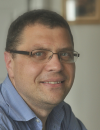 Daniel Irimia was trained as a medical doctor and a bioengineer. He is leading a research team that designs microfluidic devices for biomedical applications. He published more than 150 articles on multidisciplinary studies involving microfluidics, inflammation, infections, and sepsis. |
Roger KammCecil and Ida Green Distinguished Professor of Biological and Mechanical Engineering, Massachusetts Institute of Technology (MIT)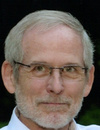 Kamm is currently the Cecil and Ida Green Distinguished Professor of Biological and Mechanical Engineering at MIT, where he has served on the faculty since 1978. Kamm has long been instrumental in developing research activities at the interface of biology and mechanics, formerly in cell and molecular mechanics, and now in engineered living systems. Current interests are in developing models of healthy and diseased organ function using microfluidic technologies, with a focus on vascularization. Kamm has fostered biomechanics as Chair of the US National Committee on Biomechanics (2006-2009) and of the World Council on Biomechanics (2006-2010). Kamm currently directs the NSF Science and Technology Center on Emergent Behaviors of Integrated Cellular Systems. He is the 2010 recipient of the ASME Lissner Medal (American Society of Mechanical Engineering) and the 2015 recipient of the Huiskes Medal (European Society of Biomechanics), both for lifetime achievements, and is the inaugural recipient of the ASME Nerem Medal for mentoring and education. He was elected to the National Academy of Medicine in 2010. Kamm is co-founder of two companies, Cardiovascular Technologies and AIM Biotech, a manufacturer of microfluidic systems for 3D culture. |
Shulamit LevenbergProfessor and Dean, Faculty of Biomedical Engineering, Technion Israel Institute of Technology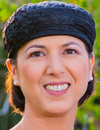 Professor Shulamit Levenberg is the elected Dean of the Biomedical Engineering Department at the Technion. She also serves as the director of the Technion Center for 3D Bioprinting and The Rina & Avner Schneur Center for Diabetes Research. Prof Levenberg earned her PhD at the Weizmann Institute of Science, where she focused on cell adhesion dynamics and signaling, and pursued her post-doctoral research in tissue engineering at MIT, in the lab of Professor Robert Langer. In 2004, she joined the Technion Faculty of Biomedical Engineering where she conducts interdisciplinary research on stem cells and tissue engineering. She spent a sabbatical year (2011-2012) as a visiting professor at the Wyss Institute for Biology Inspired Engineering at Harvard University and a summer sabbatical (2017) at the University of Western Australia as a winner of the Raine Visiting Professor Award. Prof Levenberg received the Krill Prize for excellence in scientific research, awarded by the Wolf Foundation, and was named by Scientific American as a “Research Leader” in tissue engineering, for her seminal work on vascularization of engineered tissues. She also received the France-Israel Foundation Prize, the Italian Excellence for Israel Prize, the Teva Research Prize and the Juludan Prize. In 2018, she received the Rappaport Prize for Biomedical Sciences. Levenberg has authored over 100 publications, and presented her work in over 100 international conferences as an invited or keynote speaker. She is founder and CSO of two start-up companies in the areas of cultured meat and nanoliter arrays for rapid antimicrobial susceptibility testing. She is a member of the Israel National Counsel for Bioethics and is actively involved in training young scientists. |
John NolanCEO, Cellarcus Biosciences, Inc. Past President of ISAC. ISEV, ISTH Member. Inventor of Cellarcus’ vesicle analysis technologies. Internationally recognized expert in cytometry and vesicle analysis. |
Richard Chasen SperoCEO, Redbud Labs Richard Spero is co-founder and CEO of Redbud Labs, where he leads both commercial activities and the company’s systems engineering team. He is a co-inventor of Redbud Posts, a MEMS chip covered with biomimetic cilia. Redbud Posts enable novel methods for fluid processing at the microscale, including pumping, mixing, cell sorting, and analyte isolation. This technology is used by point-of-care diagnostic device developers to improve assay speed, reliability, and performance. Prior to founding Redbud Labs, Dr. Spero earned his PhD in Physics at the University of North Carolina at Chapel Hill, where he studied blood clot rheology and developed novel systems for magnetic manipulation and time-dependent high content screening. |
Shannon StottAssistant Professor, Massachusetts General Hospital & Harvard Medical School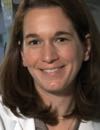 The Stott laboratory is comprised of bioengineers and chemists focused on translating technological advances to relevant applications in clinical medicine. Specifically, we are interested in using microfluidics and imaging technologies to create tools that increase understanding of cancer biology and of the metastatic process. In collaboration with the Toner, Haber and Maheswaran laboratories, we have developed a microfluidic device that can isolate extraordinary rare circulating tumor cells (CTCs) from the blood of cancer patients. We are striving to employ new imaging modalities to extract as much information as possible from these rare cells while pushing the technology further for early cancer detection. Ultimately, we hope that by working in close partnership with the molecular and cell biologist at the Mass General Cancer Center, we can create new tools that directly impact patient care. |
Mehmet TonerHelen Andrus Benedict Professor of Biomedical Engineering, Massachusetts General Hospital (MGH), Harvard Medical School, and Harvard-MIT Division of Health Sciences and Technology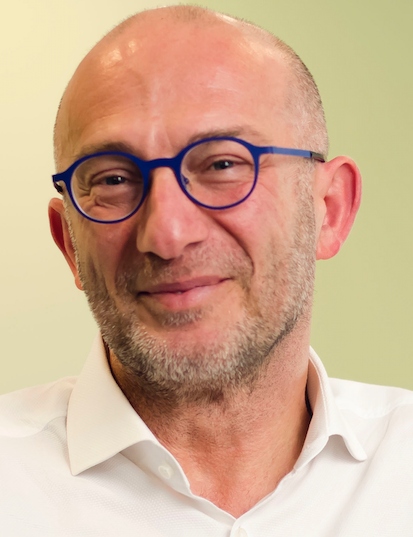 Mehmet Toner is the Helen Andrus Benedict Professor of Biomedical Engineering at the Massachusetts General Hospital (MGH), Harvard Medical School, and Harvard-MIT Division of Health Sciences and Technology. Mehmet received a BS degree from Istanbul Technical University and an MS degree from the Massachusetts Institute of Technology (MIT), both in Mechanical Engineering. Subsequently he completed his PhD degree in Medical Engineering at Harvard-MIT Division of Health Sciences and Technology in 1989. Mehmet is the co-founding Director of the Center for Engineering in Medicine, and BioMicroElectroMechanical Systems Resource Center (BMRC) at the MGH. He is also the Director of Research at the Shriners Hospital for Children Boston. Mehmet holds over 50 patents, has more than 350 publications, and is a co-founder of multiple biotechnology start-ups. Mehmet is a “Fellow of the American Institute of Medical and Biological Engineering”, “Fellow of the American Society of Mechanical Engineers”, and “Fellow of the Society for Cryobiology.” In 2012, he was given the “Luyet Medal” by the Society for Cryobiology. In 2013, he received the “H.R. Lissner Medal” from the American Society of Mechanical Engineering. He is a member of the “National Academy of Inventors” and a member of the “National Academy of Engineering.” |
M. Selim ÜnlüDistinguished Professor of Engineering, Department of Electrical and Computer Engineering, Boston University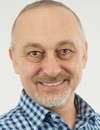 M. Selim Ünlü received the B.S. degree from the Middle East Technical University, Ankara, Turkey, in 1986, and the M.S.E.E. (1988) and Ph.D. (1992) degrees from the University of Illinois at Urbana-Champaign, all in electrical engineering. Since 1992, he has been a professor at Boston University. He is currently a Distinguished Professor of Engineering appointed in electrical and computer engineering, biomedical engineering, physics, materials science and engineering, and graduate medical sciences. He has also served as the Associate Dean for Research and Graduate Programs in engineering. His research interests are in the areas of nanophotonics and biophotonics focusing on high-resolution solid immersion lens microscopy of integrated circuits and development of biological detection and imaging techniques, particularly in high-throughput digital biosensors based on detection of individual biological nanoparticles, viruses, and single molecule counting. |
David WeitzProfessor, Harvard University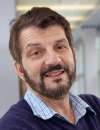 David A. Weitz is the Mallinckrodt Professor of Physics and Applied Physics at Harvard University, where he has an appointment in both the Physics Department and the School of Engineering and Applied Sciences. He received his B.Sc. in Physics from the University of Waterloo, and his PhD in Physics from Harvard. His research efforts include soft matter physics, biophysics and biotechnology. He is co-Director of Harvard's NSF-funded Materials Research Science and Engineering Center and of the BASF Advanced Research Initiative. |




